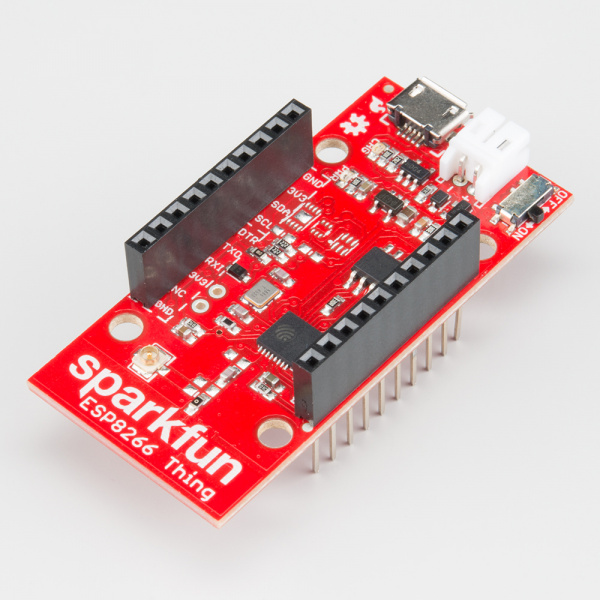ESP8266 Thing Hookup Guide
Hardware Assembly
Oh. We're getting ahead of ourselves. To connect the FTDI programmer to your Thing you'll need to solder something to the Thing.
If you've never soldered before, this is a great time to start! These solder points are easy, through-hole pins, check out our How to Solder - Through-hole Soldering for help getting started.
What, exactly, you solder to the board depends both on how you'll use it in your project, and how you'll interface it with the programmer. When it comes to selecting a header (or wire) to solder, there are a variety of options. We've tried a lot of them with the Thing:
10-pin Stackable Headers make it convenient to both breadboard the Thing and jumper wire out of it.
Or you can mix and match headers to best fit your needs. Right-angle male headers may help to interface between the FTDI and the Thing. Straight male headers are a good choice for low-profile connections. Straight female headers may help with connecting to I2C sensors. And, of course, wire can be soldered to any of the pins that have a long way to connect to something.
Once you've soldered up at least the programming port, you're ready to load some code onto the Thing. Let's blink some LEDs and IoT (Internet our Thing).

